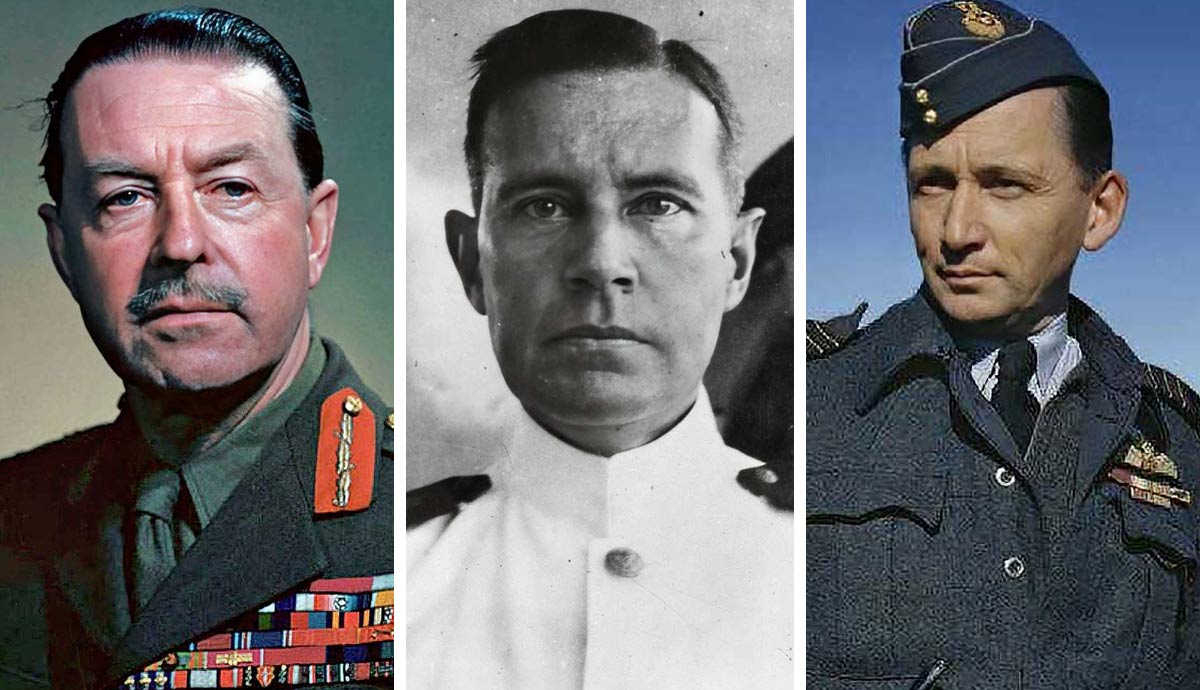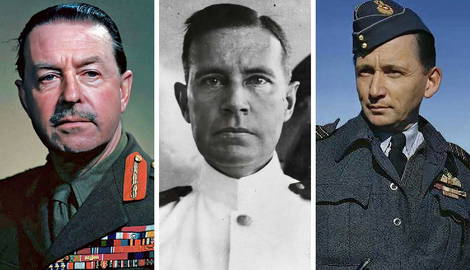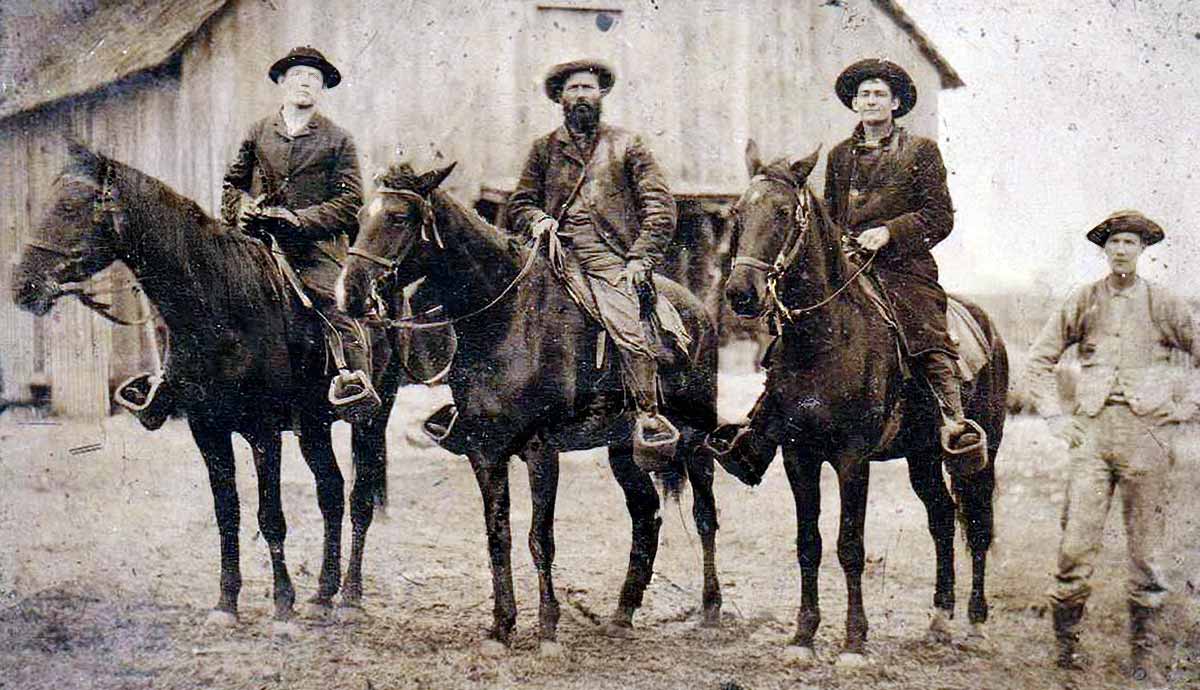
The top World War II Allied commanders, such as Montgomery or Zhukov, did not start the war with this accolade; they had to rise to the top. A Darwinian process began, eliminating the ill-suited as problems occurred, and competent, imaginative people came to the fore. Like the Axis, these Allied officers made their presence felt.
Admiral Chester Nimitz: C in C Pacific Fleet

Born in 1885, Chester Nimitz graduated seventh of one hundred fourteen from the 1905 U.S. Naval Academy class. Nimitz showed his talents by serving or commanding submarines, destroyers, or tankers with increased responsibility. He garnered a reputation as a fair and even-minded officer.
Nimitz’s promotion to run the U.S. Pacific Fleet came on December 17, 1941. His first victory came during the June 1942 Battle of Midway, with four Japanese carriers sunk versus one American flattop. The Americans, though had cracked Japanese naval codes.
Nimitz’s island-hopping campaign post-Midway towards Japan proved incredibly successful. His Pacific Fleet simply bypassed Japanese-held islands, taking only strategically important ones. The campaign included intensive battles at Leyte Gulf, Iwo Jima, and Okinawa. By August 15, 1945, Japan had surrendered. Nimitz got a promotion to Fleet Admiral, the highest Navy rank for his achievements.
Aleksandr Vasilevsky: Hero of Moscow

As a man who became one of Stalin’s favorite generals, Vasilevsky started as a Great War Imperial Army officer who later joined the Red Army. Between the World Wars, his organizational and training abilities earned him promotions despite Stalin’s purges. Winning Stalin’s respect never came easy, but Vaisilevsky secured this after directing Moscow’s defense in 1941 against the German Wehrmacht. Vasilevsky’s carefully planned two-pronged offensive cut the German 6th Army off at the Battle of Stalingrad. This army surrendered in February 1942, which became a World War II turning point. He helped plan and carry out 1944’s Operation Bagration.
Bagration destroyed Army Group Center, Germany’s largest army in Russia, which pushed the Wehrmacht out of Russia. After Germany’s surrender in May 1945, Vasilevsky took command in the Far East. He planned the Manchurian invasion, leading 1.6 million troops and defeating the Japanese in just twenty-four days. This quick defeat of the Japanese influenced their decision to surrender on August 15, 1945.
Arthur Tedder: Air Marshal

Though not as famous as some World War II commanders, Tedder deserves mentioning. Born in 1890, Tedder served as a pilot in the Great War, commanding a squadron by 1918. He pushed for bigger, better long-range bombers between the wars as he rose in ranks. In 1941, Tedder commanded the RAF in the Middle East, using his operational and organizational skills to enable the RAF to achieve air superiority by 1942. By 1943, he took over Mediterranean Air Command under Eisenhower and was later Deputy Supreme Commander for D-Day preparations. As the Deputy, Tedder used his diplomatic skills to iron out differences between the Americans and the British. During D-Day, his use of air power blocked German reinforcements from reaching Normandy. Post war, Tedder helped organize supply flights in the Soviet Berlin Blockade in 1948.
Admiral Raymond Spruance: Carrier Admiral

World War II showed that airpower ruled the oceans, and Spruance successfully adapted to this new era. He graduated from the U.S. Naval Academy in 1906 with an electrical engineering degree. Spruance served in World War I and held different commands before World War II. After Japan’s strike, he commanded cruisers in the Pacific, raiding Japanese-occupied islands.
Spruance’s knack for remaining calm, focused, and calculated served during the Battle of Midway. He took command of two carriers, the Yorktown and Enterprise. He scrambled his squadrons, surprising the Japanese as they arrived at different times, sinking four carriers and losing Yorktown. The victory gained time for the U.S. Spruance skillfully commanded American carrier forces for the next three years, participating in critical Pacific battles. After the war, he served as Ambassador to the Philippines in 1952.
Harold Alexander: Coalition Commander

Alexander’s Royal Army career began in World War I, and in between the wars, he served in Europe, India, and the Middle East. In 1940, he led the last British troops out of Dunkirk. From 1942, he commanded British troops in Burma, retreating as the Japanese defeated the British. After serving in North Africa, Alexander commanded Allied troops in Italy. This exhibited his knack for discuss and compromise as he led soldiers from over a dozen Allied countries. Alexander was promoted to Field Marshal in November 1944, taking over the entire Mediterranean Command. These Allied commanders, such as Patton or Montgomery, did not achieve their level of fame. But their abilities, intelligence, and service put them at the top.











